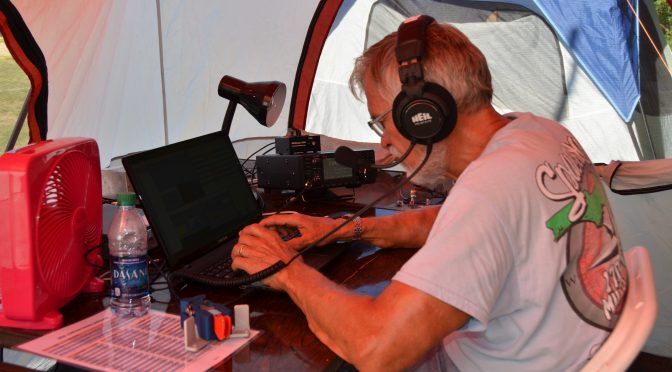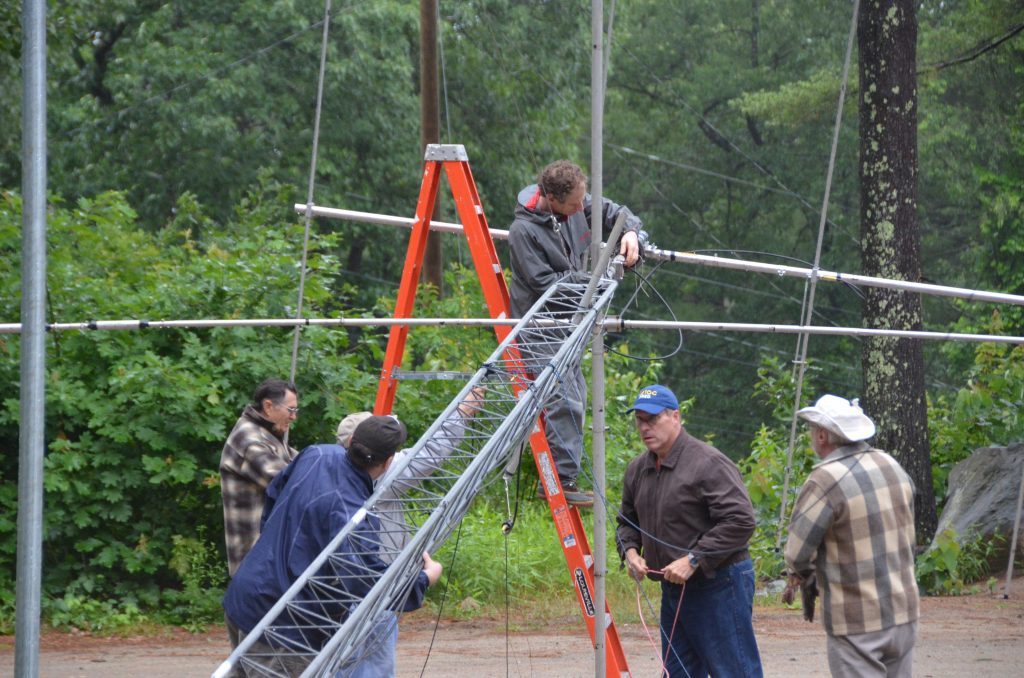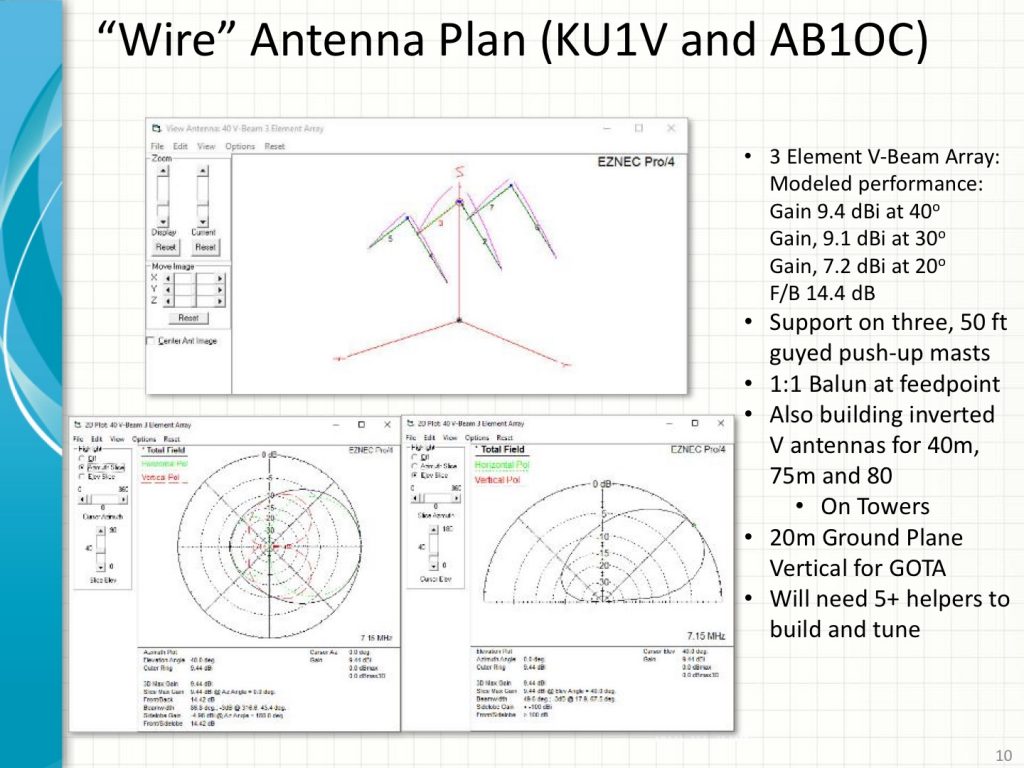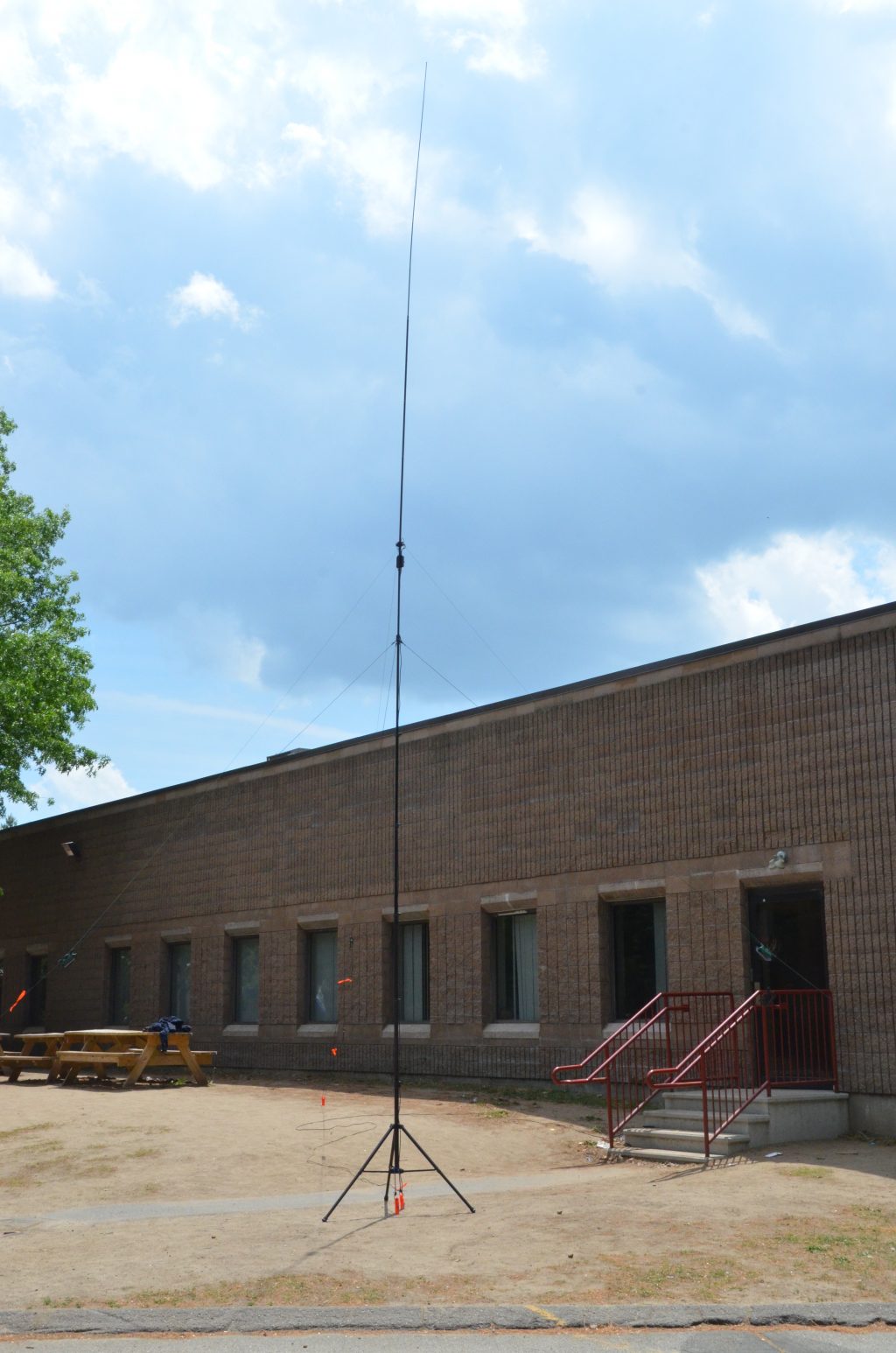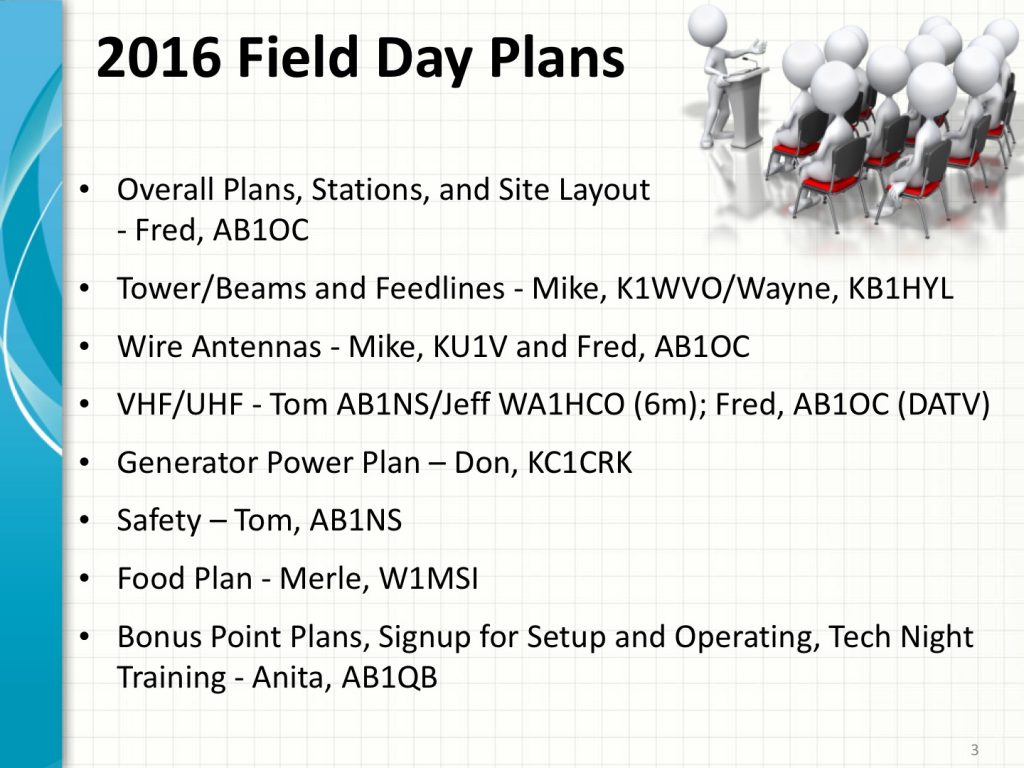Field Day 2016 found me once again participating with NARC in the bucolic setting of Hollis, NH. I thought that last year was to be my last Field Day with the club as I was in the process of pulling up stakes and heading for Florida. However, I had the opportunity to head north the weekend before Field Day to drop my grand kids and their mom off for the summer. Once I realized the proximity to Field Day on the calendar, it didn’t take much lobbying from Fred, AB1OC to convince me to hang around for Field Day.
Prior to leaving for NH, Fred mentioned that the club would be operating from the Hollis-Brookline High School ball fields at the back of the school. The last time the club operated from Hollis was in 2012 when we were still putting up 70-foot towers and dipoles. Since that time, the club has downsized as far as ambition by switching to 40-foot towers using the falling derrick method to raise a single triband antenna and dipoles without anyone climbing. For those new to the club, the falling derrick approach came about from the 2014 World Radiosport Team Championship (WRTC) event that showcased New England as the Yankee Clipper Contest Club hosted 50-plus two-person teams of the best contest operators in the world. Several club members participated in setting up some 65 towers for the mid-July event.
For 2016, plans called for setting up the two towers similar to what was done last year. This time, however, the 40 SSB station was going to be beefed up with a 3-element Inverted Vee beam array. The club had tried such an array back in the 1990’s on 80 CW. It worked OK considering the elements were suspended from a drooping rope from a tree to one of the towers, hardly in line to benefit from a director and reflector. Fred opted to set up three, 50-foot telescoping masts with pulleys to hoist the elements up. I must admit that I figured setting up the array was going to be the long pole – err, poles – in the NARC tent. With twelve sets of guy ropes per mast I envisioned a rat’s nest just begging to be tangled. My pessimism proved to be unfounded as the masts went up without much of an effort from Murphy to mess things up. Kudos to all the folks who pitched in to pull it off smoothly. The array dominated the Field Day setup like a far-off DXpedition.
Also new for Field Day was the use of the new ICOM 7300 transceivers. I learned that many in the club have purchased what is an amazing rig with a very easy user interface (especially for me) and great phase noise performance at an uncharacteristically cheap price for ICOM. The low phase noise level translates to a lower level of interference from nearby stations. I had the chance to familiarize myself with the 7300 leading up to Field Day using the N1MM+ logging program so that I could avoid the panic at T-0. I operated 40 CW with an inverted Vee that was less than 100 feet from the end of the driven element of the 40 SSB array. I did not experience any noticeable interference.
Field Day 2016 had a number of welcome surprises for me after nearly 30 years of my involvement with NARC. To put in simply: a lot of new faces. The club has been growing by leaps and bounds since I left. (Hmm, that doesn’t make me look good.) I wore my NARC call badge in case anyone wondered who I was. I was happy to meet all the new “2 X 3” hams in the club and I hope I will be able to match faces to calls as time goes on. Other highlights were making contacts on satellite after a hiatus of several years, and a cool demonstration of amateur TV with the Pepperell club.
Field Day 2016 was a homecoming for me since I also had the chance to meet old friends from many past NARC Field Days. While NARC has operated at other sites over the years, Hollis has a rich history in the club. Back in the 80’s NARC operated from what was then an open field adjacent to Beltronics off the town center. I was new to NH back then and I was amazed at the level of participation to build four towers and set up 12 or more stations. The logistics of such an operation benefited from (1) a storage barn less than a mile away on Ridge Road; and (2) a large pool of 30-40 year-old Hams to put it all together. Using the call of our host Jim, N1NH, NARC was regularly in the top 10 finishers for Field Day.
The club grew steadily back then. When the field at Beltronics succumbed to rows of storage sheds, I looked around for a suitable site that would not require a large caravan of pickup trucks to haul our equipment. The solution was right under our noses: the field beyond the orchard behind our storage barn. This proved to be the idyllic setting for a Field Day operation that everyone liked. It did not take long for the club to ratchet up Field Day participation to 20 stations or more. NARC was off and running big-time, culminating in winning it all four years in a row during the 1990’s. One of the club members secured the call N1FD for the club to showcase our accomplishments.
With Field Day 2016, I see a rebirth of the enthusiasm I enjoyed in the past. The future of NARC Field Days will be driven by the new crop of hams in the club. It will most likely NOT be “your grandfather’s Field Day”. The goal is not to see if the club can match the glory years of yesteryear but to try new things. Alas, CW is fading in popularity in the face of the digital modes that have cropped up featuring 100% copy with near-QRP power levels. Maybe more stations running PSK or some other digital mode is worth trying. Rigs like the ICOM 7300 are a step in the right direction when it comes to mitigating inter-station interference. However, more can be done to quash interference when using the triplexers so that hassle-free copy is possible with simultaneous stations using the same beam. And it doesn’t have to be just better filters. Maybe some neat lock-out or synchronization schemes can be tried to make competing modes play nicely. Field Day should always be a venue to try new ideas, whether it be interference mitigation or some odd-ball antenna design. All you newbies in the club are far better with a computer than I will ever be. Time to use all those powerful tools and tackle these age-old problems.
Ed, K2TE
Hashtags: #ARRLFD #N1FD

